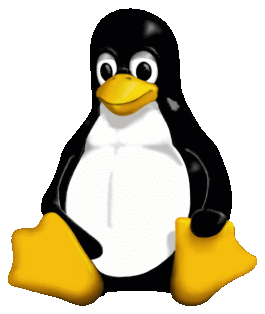Pointers Gone Wild Edit on Github
Learning Objectives
The learning objectives for Pointers Gone Wild are:
- Pointers
- Strings
- Functions
Suggested Readings
We suggest you read the following from the
wikibook
before starting Pointers Gone Wild:
- C Programming, Part 1: Introduction
- C Programming, Part 2: Text Input And Output
- C Programming, Part 3: Common Gotchas
Introduction
In CS 125, CS 225, and other classes, you have used various languages that are considered to be “C-based”, but up to now you may have very limited experience in C programming. This MP will provide a short programming introduction to pointers, strings, and functions in C.
This machine problem will be divided up into two parts. In the first part, you will be modifying broken functions so that their output matches the given output. In the second part, you will need to write code to call some ‘creatively defined’ functions so that those functions produce the desired output.
For this MP, you should modify:
- part1-functions.c
- part2-main.c
All other files will be replaced with new/different files for grading. If you modify any other files for debugging purposes, please ensure you test your program with the original files.
Part 1:
There are erroneous/unimplemented functions in part1-functions.c. Your task is to modify functions according to comment above each function such that the output of part1 looks exactly as follows:
== one() ==
3^2 + 4^2 = 25
10^2 + 10^2 = 200
== two() ==
20 not passed!
100.000000 passed!
== three() ==
The value of p is: 4
== four() ==
The value is between zero and one.
The value is not between zero and one.
== five() ==
x and y are equal.
x and y are different.
== six() ==
4 == 4.000000
432 == 432.000000
== seven() ==
a is a letter.
a is not a letter.
== eight() ==
Hello
== nine() ==
The value of p is: 12.500000
== ten() ==
0 == 0?
== eleven() ==
Hello World!
== twelve() ==
0.000000 0.100000 0.200000 0.300000 0.400000 0.500000 0.600000 0.700000 0.800000 0.900000
== thirteen() ==
0 10 40 90 160 250 360 490 640 810
== fourteen() ==
orange and blue!
ORANGE and blue!
Orange and BLUE!
orange and blue!
== fifteen() ==
You passed in the value of one!
You passed in the value of two!
You passed in some other value!
== sixteen() ==
Hello
== seventeen() ==
The radius of the circle is: 17.500000.
The radius of the circle is: 10.000000.
== eighteen() ==
Result: 323
Result: 2499
== clear_bits() ==
170
0
171
0
20
0
== little finite automatons
5
4
6
7
Note that you can just diff with part1-expected-output.
Part 2:
We have pre-uploaded some files to your mp0 SVN directory, including part2-functions.c. Inside part2-functions.c, you will see twelve different functions, including first_step() (re-printed below).
void first_step(int value) {
if (value == 81)
printf("1: Illinois\n");
}
To complete Part 2, you must complete the program part2-main.c so that part2-main.c makes calls to all twelve functions in part2-functions.c such that they print their “Illinois” line. When running ./part2, your output should look exactly like:
1: Illinois
2: Illinois
3: Illinois
4: Illinois
5: Illinois
6: Illinois
7: Illinois
8: Illinois
9: Illinois
10: Illinois
11: Illinois
Note that you can just diff with part2-expected-output.
You should NOT edit the part2-functions.c file. In fact, when we grade your program, we will replace the part2-functions.c file with a new version of the file (and we’ll change the “Illinois” string so printing out “Illinois” in a for-loop will get you no credit).
Compile and Run
To compile the release version of the code run:
make clean
make
This will compile your code with some optimizations enabled, and will not include debugging information (if you use a debugger on the ‘release’ build, it will not be able to show you the original source code, or line numbers). Optimizations sometimes expose bugs in your code that would not show up otherwise, but since optimizations tend to reorder your code while compiling, an optimized version of your code is not optimal for debugging.
You probably don’t need to worry about the different build types very much for this assignment, but the distinction will become more important on future assignments.
To compile your code in debug mode, run make debug instead of make.
To run Part 1:
./part1
or
./part1-debug
To run Part 2:
./part2
or
./part2-debug
Submission Instructions
Please read details on Academic Integrity fully. These are shared by all assignments in CS 241.
We will be using Subversion as our hand-in system this semester. Our grading system will checkout your most recent (pre-deadline) commit for grading. Therefore, to hand in your code, all you have to do is commit it to your Subversion repository.
To check out the provided code for
pointers_gone_wild
from the class repository, go to your cs241 directory (the one you checked out for "know your tools") and run:
svn up
If you run ls you will now see a
pointers_gone_wild folder, where you can find this assignment!
To commit your changes (send them to us) type:
svn ci -m "pointers_gone_wild submission"
Your repository directory can be viewed from a web browser from the following URL: https://subversion.ews.illinois.edu/svn/sp17-cs241/NETID/pointers_gone_wild where NETID is your University NetID. It is important to check that the files you expect to be graded are present and up to date in your SVN copy.
Assignment Feedback
We strive to provide the best assignments that we can for this course and would like your feedback on them!
This is the form we will use to evaluate assignments. We appreciate the time you take to give us your honest feedback and we promise to keep iterating on these assignments to make your experience in 241 the best it can be.
https://goo.gl/forms/z06gBY7MocFDrE3S2
